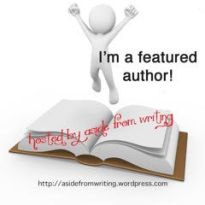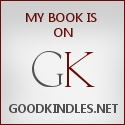
Herman Munster
I’m pretty sure I’ve talked about this before to some extent, but I couldn’t find any posts on the topic. Regardless, I keep running into the same obstacle when talking to some people about War of Nytefall. They hear that the characters are vampires and respond as if Clyde and his friends are running around slaughtering everyone. Cassidy and Lloyd Tenay of Derailing Bedlam are actually more violent than the Dawn Fangs. Still, people here the word ‘monster’ or a monster species then jump to conclusions. It gets frustrating too when you’re bombarded by questions like:
- So, who is the human that they are fighting? Uh, there isn’t one.
- Everyone is a bad guy? No. There are good and evil vampires here.
- Will a hero appear to kill them all? Kind of like that first question.
- There’s nobody to root for. Not a question, but you’re obviously not paying attention.
It’s amazing to me that there is such a wall when it comes to using creatures such as vampires and werewolves as protagonists. It’s like people refuse to believe that these beings can be anything more than blood-thirsty beasts. You do have to maintain some of their grisly and monstrous habits, but it isn’t like they are that removed from humans. In most cases, vampires were once mortal or at least act as part of a society (either covert or overt) that mimics a mortal system. That’s why I find it so odd that people have trouble considering that you can have one who isn’t entirely monstrous. Not like vampiric heroes are anything new too since you have Forever Night, Morbius the Living Vampire, Angel, and some heroic incarnations of Dracula. Yet, I continue to receive messages asking about how I can have a story with no heroes or comments that assume the Dawn Fangs are brutal destroyers.
Part of this could come from how I describe them on the blog. I always maintain that they are not mortal and can be violent. Clyde gets this description a lot, but I can’t always go into that much more detail. I explain that he is still human with feelings, dreams, and some restraint. A big part of the overall series is him holding onto what little humanity he has left since, unlike the other Dawn Fangs, he’s on the edge of being a full-blown monster like people think he already is. I’ve had to forge a balance between his monster and human side with there never being a clear superior. He goes back and forth a lot, which is something you can really only see in teasers and the books themselves. On the blog, I mention he’s a vampire and that seems to seal the deal for some.
Is it really that hard to believe that monsters can be used for more than antagonists? As authors, we’re supposed to put our own twist on ideas. Yet, people are very protective of the idea that monsters are monsters. I remember running a D&D game and the group ran into a band of goblins crossing a bridge. They attacked right away and discovered afterwards that these were miners heading towards a nearby city to deliver bags of gemstones. Keep in mind that it’s really only the ‘ugly’ monsters that get this kind of treatment. Dragons, unicorns, griffins, pegasi, and other types that are seen as beautiful can be anything. Doesn’t matter if they tear somebody apart as quickly as a vampire who is known for fangs, blood, and scary faces. There’s a long history to go up against and I think I underestimated it when I wrote War of Nytefall.
I know is this is near the end, but I’m now going to say what I mean by humanoid monster. These are creatures that don’t so much as look human, but they have the emotions and thoughts that we typically associate with human characters. They might be monster on the outside, but they have depth to their soul. As odd as it sounds, Herman Munster is a great example even though he was made for comedy. He looks scary to some extent while being a loving father and husband. There are human characters that can’t even claim that because they’re monstrous on the inside. Funny how the opposite doesn’t seem to get the same amount of praise unless it’s a romance. Maybe more people should give humanoid monster protagonists a chance in the hopes of making them more accepted by the world. Just a thought. Not that I have a book series to sell. Okay, I do, but it’s my blog and I have to make pitches from time to time.





Interesting perspective. Yes, we love our biases.
😀 I thought your comments about unicorns were funny, too. I told my boys a brief history of their history pre-girly rainbow interest, and now they keep telling girls that unicorns impale people…
LikeLike
The biases keep us comfortably insulated. 😜 I’m surprised that people are shocked by the unicorns. I mean, that horn is long and pointy, so there had to be some offensive usage early on.
LikeLiked by 1 person
I love this post. If you think about monster types, you can’t just keep trotting out the same old thing. Even classics, like Dracula etc., there was some degree of sympathy for the monster. It’s what made it work. I can only relate it to my experiences, but pirates were not nice people. However, my audience is supposed to cheer for them so it becomes a balancing act. My good guys deployed monsters too, so there is some dancing around to make that acceptable too. Others have gotten away with it, and we can too. Think about Hulk, Ben Grimm, and Beast. These days, monster is as monster does, not how monster looks. Great post.
LikeLike
Thanks. Comics do seem to do the monster heroes more successfully. Maybe the visual medium helps?
LikeLiked by 1 person
It probably does, but I don’t think it limits us. Those characters all have some kind of sympathy angle going for them. We can do that too. What woman could ever love Ben Grimm? A blind one. That kind of angle on it.
LikeLike
That’s another thing. What do you do when your hero needs to stay monstrous?
LikeLiked by 1 person
Not sure. I suggest making it out of his control. Perhaps use dialog from others to illustrate that. Think of the wolfman who’s locked up for three days by his loved ones. They deliver the reasons, and we feel bad for him.
LikeLike
But that doesn’t work for many stories. It pigeonholes him a bit and almost makes the hero a supporting character. Those who tell his story end up taking the protagonist role.
LikeLiked by 1 person
In Clyde’s case, I can see that. I was thinking more broadly.
LikeLike
Hellboy is another example.
LikeLiked by 1 person
Good one.
LikeLike
I can’t help thinking of the Blade and Underworld movies. And good point about the Munsters (a show I haven’t seen in ages)!
LikeLike
Vampires do seem to get the hero treatment a lot.
LikeLike
I like how you describe a humanoid, not so much appearance but what is on the inside.
LikeLike
Thanks. Hope that part helps get my idea across.
LikeLiked by 1 person
I think it did.
LikeLike
Reblogged this on Author Don Massenzio and commented:
Check out this post from Charles Yallowitz with the topic, Writing the Humanoid Monster Protagonist
LikeLike
Thanks for the reblog.
LikeLiked by 1 person
You’re welcome.
LikeLike
No matter the creature/monster you’re writing about, if it’s one people have heard a lot about before, they’ll have their stereotypical image of what it will be like, and assume yours will be like that too. Some people will then struggle to accept that you aren’t conforming to stereotypes. It’s just how people are. Personally, I like different takes on creatures/monsters, and love when people don’t conform to stereotypes.
LikeLike
I like most attempts at a twist on an established creature. They’re fun and breathe fresh air into the concept.
LikeLike
I agree.
LikeLike
There is a long history, though, of writers “reforming” monsters in some sense. Anne McCaffrey’s Pern books started because she thought the poor old dragon needed a more sympathetic aspect. Ann Rice in her Interview With a Vampire books delivered a more psychological portrait of her creature.
Every writer sets up the rules for what their “monster” is and how they will operate in the story. Your dawn fangs are really not much different.
And, dear old Herman Munster!
LikeLike
True. The strange thing is that it seems harder to do a reform. People appear to be more opinionated and vocal these days when it comes to these things. So, I wonder if there is a cultural change that makes monster reform more difficult to accept.
LikeLike